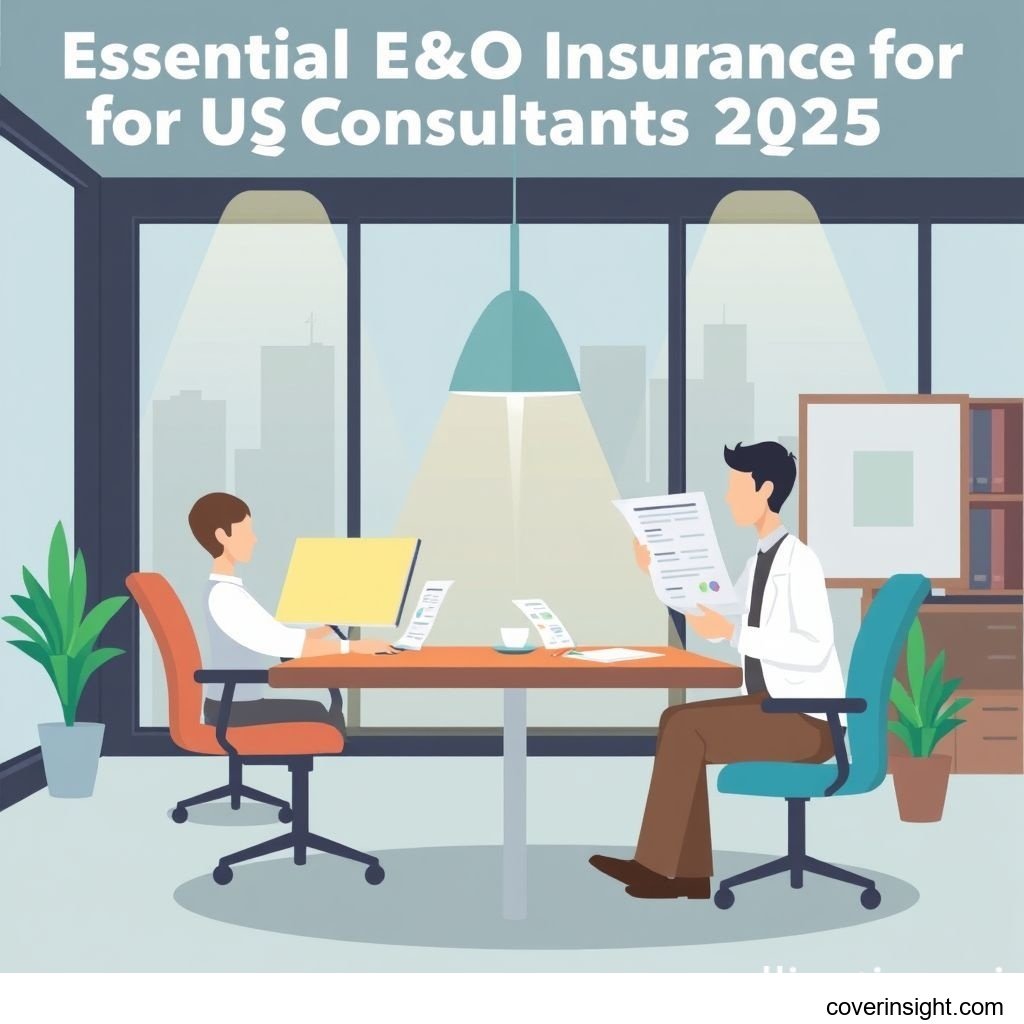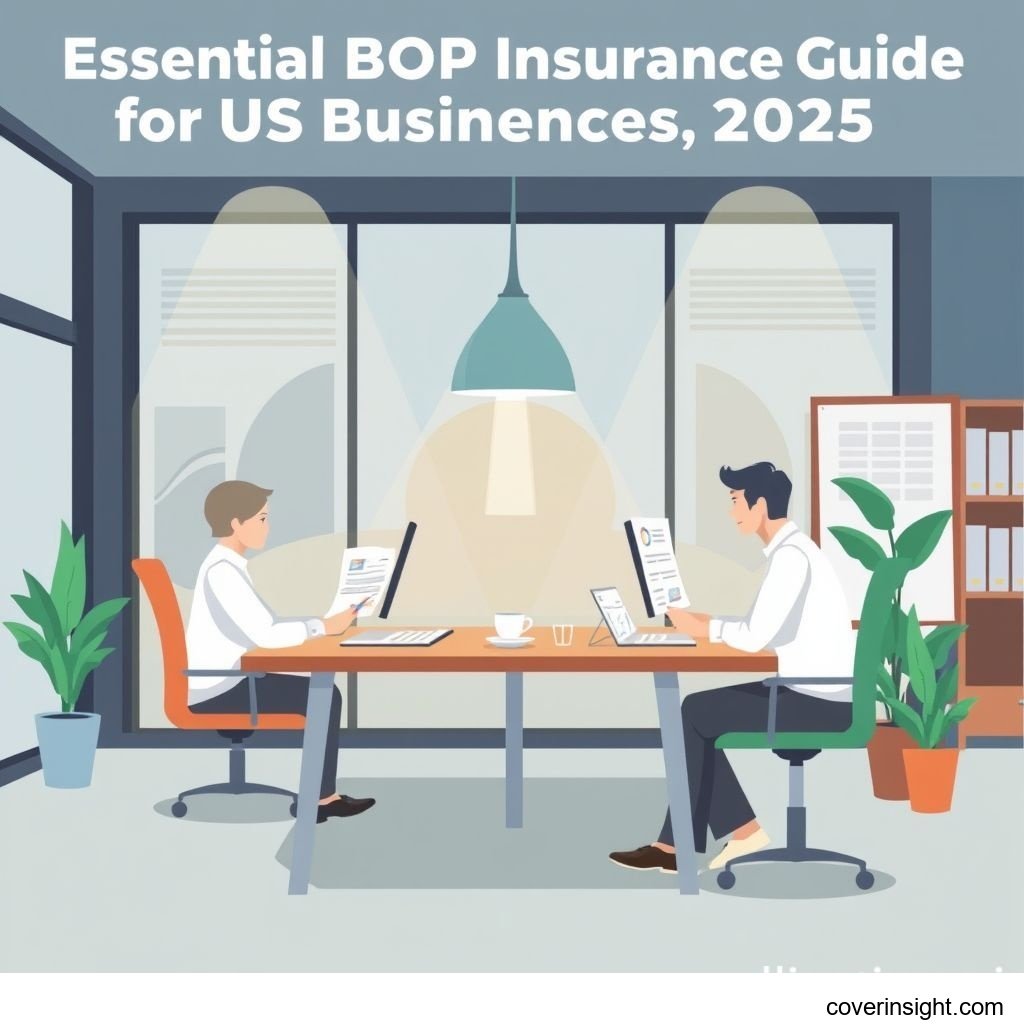Essential E&O Insurance for US Consultants 2025
Introduction
In the dynamic landscape of 2025, consultants across the United States face an ever-growing array of risks. Whether you're advising on technology, finance, marketing, or human resources, the advice and services you provide carry significant responsibility. This is precisely where Errors & Omissions (E&O) insurance, also known as professional liability insurance, becomes not just a safeguard, but an absolute necessity. It’s designed to protect consultants from claims of negligence, errors, or omissions in their professional services, providing a critical safety net against potential financial ruin from lawsuits. Without it, a single misstep or misunderstanding could cost you dearly, potentially derailing your entire career. For those seeking broader information on various types of coverage, you might find value in exploring general [Insurance Resources Global].
Coverage Details
Understanding the intricacies of E&O coverage is paramount for any US consultant aiming to protect their practice effectively. It’s not just about having a policy; it’s about having the right policy.
What’s Included
Typically, E&O insurance policies for consultants cover a range of scenarios where your professional actions (or inactions) might lead to financial loss for your client. This includes:
-
Negligence: If a client claims you failed to exercise reasonable care in your services, leading to their financial harm.
-
Errors and Omissions: Coverage for mistakes, oversights, or failures to perform as promised. For example, a financial consultant might miscalculate a projection, or a marketing consultant might accidentally omit crucial compliance information in a campaign.
-
Misrepresentation: Claims that you provided inaccurate information or advice.
-
Breach of Contract (sometimes): While primary contract disputes are usually outside E&O, some policies may offer limited coverage if the breach stems from a professional error.
-
Defense Costs: Perhaps one of the most vital aspects, E&O insurance covers the legal costs associated with defending yourself against a claim, regardless of whether you are found liable. This alone can be a game-changer, as litigation costs can quickly climb into the tens or even hundreds of thousands of dollars.
-
Copyright and Trademark Infringement: Protection if a client claims your work infringed on their intellectual property.
Common Exclusions
While robust, E&O policies aren't a panacea for all business woes. Common exclusions often include:
-
Bodily Injury or Property Damage: These are typically covered by General Liability insurance, not E&O.
-
Intentional Malice or Fraudulent Acts: E&O is for errors, not deliberate wrongdoing. If you intentionally defraud a client, your policy won't cover it.
-
Illegal Acts: Actions that are against the law are not covered.
-
Worker's Compensation Claims: Issues related to employee injuries are handled by Worker's Comp.
-
Pre-existing Claims: Claims arising from incidents that occurred before the policy's effective date or before you had coverage.
-
Contractual Liabilities: While some specific breaches might be covered, general contractual disputes or liabilities assumed under a contract that go beyond your professional negligence are usually excluded.
-
Punitive Damages: Often, policies will not cover damages awarded to punish the defendant rather than compensate the plaintiff.
Cost Analysis
The cost of E&O insurance for US consultants isn't a one-size-fits-all number. It's influenced by several factors, making it essential to understand what drives your premiums.
Price Factors
When calculating your premium, insurers consider:
-
Industry and Risk Level: A consultant in a high-stakes field like cybersecurity or financial advisory might pay more than a general marketing consultant, due to the higher potential for significant financial losses.
-
Revenue and Business Size: Larger businesses with higher revenue typically face higher premiums, as they often take on larger, more complex projects with greater potential for error.
-
Claims History: A history of previous E&O claims will almost certainly lead to higher premiums.
-
Location: Insurance rates can vary by state, reflecting different legal environments and historical claims data. For instance, states with more litigious environments might see slightly higher rates.
-
Coverage Limits and Deductibles: Choosing higher coverage limits (the maximum the insurer will pay out) will increase your premium. Conversely, opting for a higher deductible (the amount you pay out-of-pocket before insurance kicks in) can lower your premium.
-
Risk Management Practices: Insurers might offer discounts if you demonstrate robust risk management, such as having clear contracts, documented processes, and ongoing professional development.
Saving Tips
Looking to keep your E&O premiums from breaking the bank? Here are a few smart strategies:
-
Shop Around: Don't just go with the first quote. Get multiple quotes from different providers. A good starting point might be comparing options, much like one might explore various government resources on sites such as [Healthcare.gov] for other needs.
-
Increase Your Deductible: If you have a solid emergency fund, consider a higher deductible. Just make sure it's an amount you can comfortably afford if a claim arises.
-
Implement Strong Contracts: Clear, concise contracts that define the scope of work, client expectations, and limitations of liability can significantly reduce your risk of a claim.
-
Continuous Professional Development: Staying current with industry standards and best practices not only makes you a better consultant but also demonstrates to insurers that you are actively mitigating risks.
-
Bundle Policies: Sometimes, insurers offer discounts if you purchase multiple policies (e.g., E&O, General Liability, Business Owner's Policy) from them.
-
Review Annually: Your business changes, and so should your insurance. Review your policy every year to ensure it still meets your needs and to look for new saving opportunities.
FAQs
-
How much does E&O insurance for consultants cost?
For most small to mid-sized US consulting firms, annual premiums can range from $500 to $2,500, though highly specialized or larger firms could pay significantly more, from $5,000 to $10,000+. It truly varies based on the factors mentioned above.
-
What affects premiums?
Key factors include your industry (risk exposure), annual revenue, past claims history, chosen coverage limits, and deductible amount. The more specialized and high-stakes your consulting, the higher the potential premium.
-
Is it mandatory?
No, E&O insurance is generally not legally mandatory for consultants in the US, unlike auto insurance or workers' compensation in many states. However, many clients (especially larger corporations or government agencies) will require you to carry E&O insurance as a condition of engagement. From a practical standpoint, it's virtually mandatory for serious professional consultants. According to data from the US Bureau of Economic Analysis, the professional, scientific, and technical services sector, which includes consulting, contributes significantly to the GDP, underlining the importance of professional standards and protection within this vital sector.
-
How to choose?
Look for a policy that offers adequate coverage limits for your exposure, a manageable deductible, and clear terms regarding what is and isn't covered. Compare quotes from several reputable insurers and always read the fine print. Don't hesitate to consult with your state's insurance department for consumer guides or verified information; you can find contact details for all of them via the [National Association of Insurance Commissioners] website or by directly searching for your [State Insurance Departments].
-
Consequences of no coverage?
Operating without E&O insurance is like playing with fire. If a client sues you for professional negligence and you don't have coverage, you'd be personally responsible for all legal defense costs, settlements, or judgments. This could quickly bankrupt your business, seize your personal assets, and permanently damage your professional reputation. Think of the 2017 case where a small consulting firm in Texas faced a multi-million dollar lawsuit after a software implementation project went awry, allegedly due to their advice. Without E&O coverage, such a claim would have simply put them out of business entirely and left them with crushing debt. With it, they could defend themselves and eventually reach a manageable settlement.
Author Insight & Experience
Based on my experience living and working within the US business landscape, I’ve seen firsthand how quickly a professional services dispute can escalate. It's not just the "big" consultants who face these issues; even a solo practitioner can find themselves in hot water over what seems like a minor oversight. The peace of mind that comes with knowing you’re covered allows you to focus on delivering excellent service, rather than constantly looking over your shoulder. As someone who’s navigated the complexities of small business insurance, my advice is always to "measure twice, cut once" when it comes to selecting your E&O policy. It’s an investment in your future, not just an expense. For further localized guidance, starting with resources on your [US Insurance Home] state portal can be incredibly helpful.








Comments